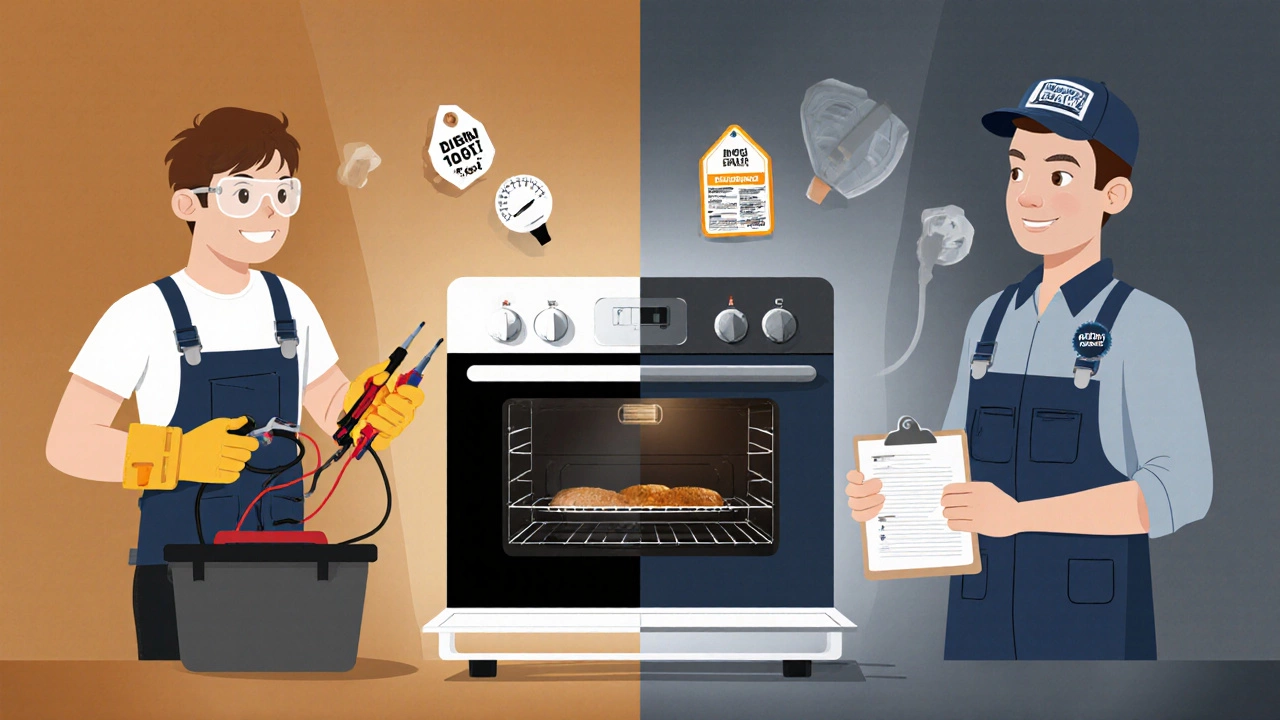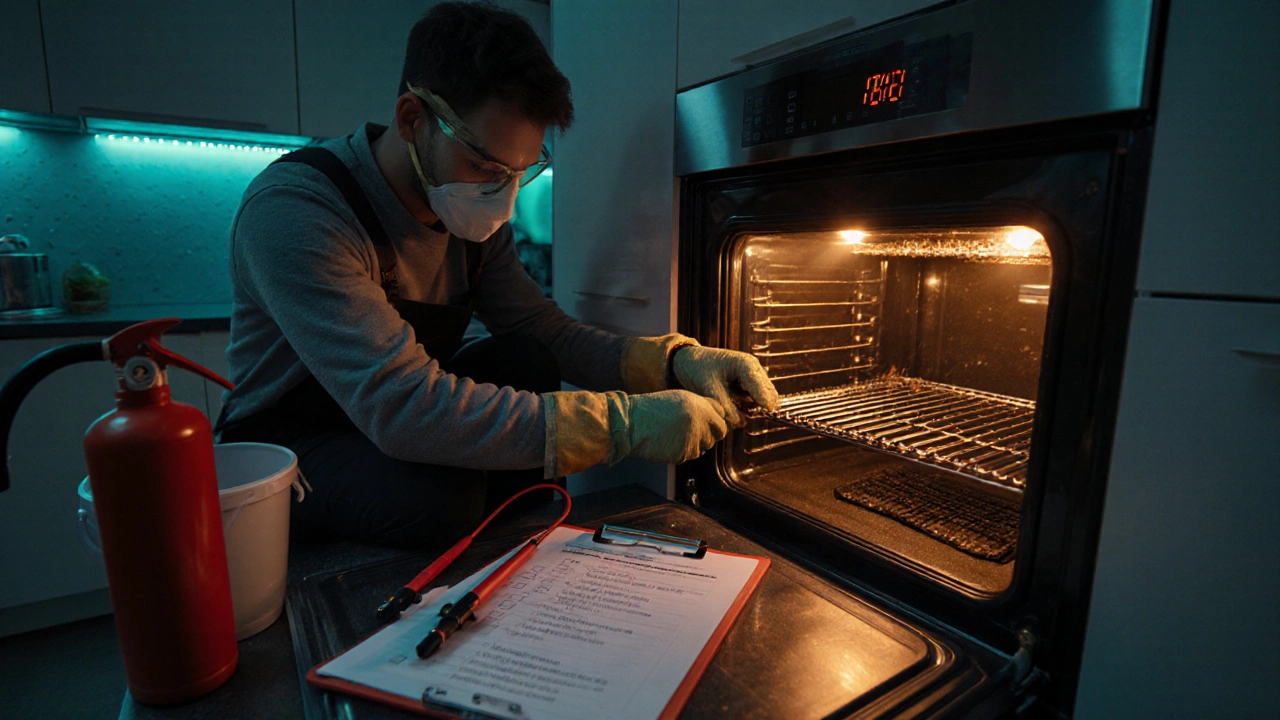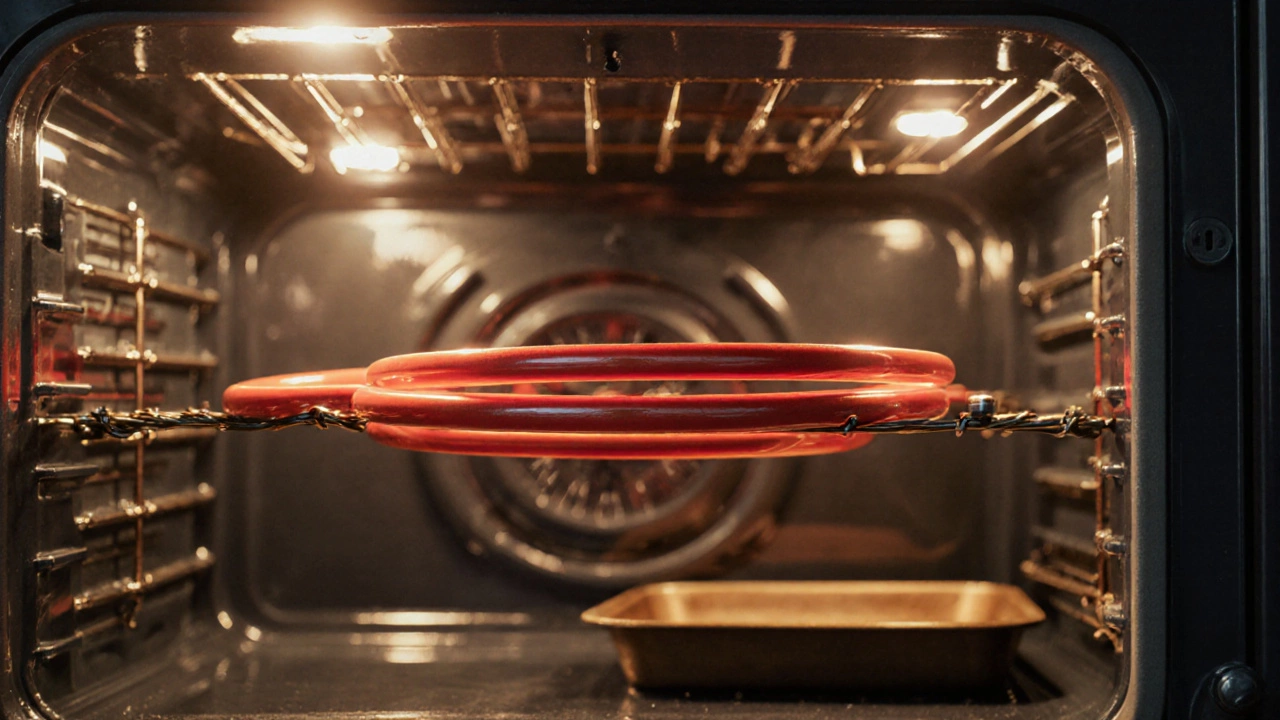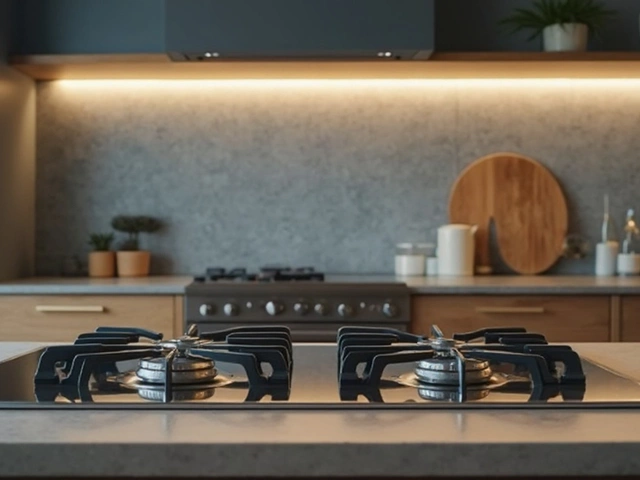When the bake function stops heating and the oven takes forever to reach temperature, the culprit is usually the Electric oven element is the heating component inside an electric oven that converts electricity into heat for baking or broiling. Homeowners in Adelaide and across Australia quickly wonder: how much will it cost to replace that part? This guide breaks down every cost component, shows realistic price ranges for 2025, and helps you decide whether to DIY or call a pro.
What exactly is an oven element?
Modern electric ovens use two main heating elements: a lower "bake" element and an upper "broil" element. Both are essentially metal coils (sometimes covered in a ceramic sheath) that glow red when electricity passes through them. The bake coil provides the steady, even heat for cakes and roasts, while the broil coil delivers intense, direct heat for top‑brown finishes.
There are three common designs you’ll encounter:
- Standard coil: Classic metal ribbon, inexpensive and easy to replace.
- Ceramic‑coated coil: Offers more even heat distribution and is less prone to rust.
- Infrared quartz element: Found in high‑end models, heats faster but costs significantly more.
Understanding which type your oven uses is the first step toward estimating the electric oven element cost.
Key factors that drive the price
Several variables affect the final bill:
- Part price: OEM (original equipment manufacturer) parts are usually pricier than aftermarket equivalents. A standard coil ranges from AUD 30‑70, while a ceramic‑coated part can be AUD 80‑130.
- Labor rates: Technicians in Adelaide charge between AUD 80‑120 per hour. Most repairs take 0.5‑1 hour, but a more complex quartz element may require an extra hour.
- Appliance brand and model: Premium brands (e.g., Miele, Bosch) often need proprietary parts, pushing the part price up by 20‑40%.
- Warranty coverage: If your oven is still under the 2‑year manufacturer warranty or covered by an extended service plan, parts and labour may be free or heavily discounted.
- Location: Travel time adds a flat fee (usually AUD 20‑40) in regional areas.
- Safety regulations: Australian Consumer Law mandates that any replacement part meets AS/NZS 60335 safety standards, which can influence both part selection and installer certification fees.
Typical price ranges in Australia for 2025
Below is a snapshot of common costs you’ll see when you request a quote. Prices are averages from major retailers like Bunnings, Appliance Parts Online, and local service hubs.
| Element type | Part cost (AUD) | Labour (per hour) (AUD) | Total typical range (AUD) |
|---|---|---|---|
| Standard coil (bake or broil) | 30‑70 | 80‑120 | 110‑190 |
| Ceramic‑coated coil | 80‑130 | 80‑120 | 160‑250 |
| Infrared quartz element | 150‑250 | 100‑150 | 250‑400 |
These figures include a modest travel surcharge. If your oven is still under warranty, you may only pay the travel fee.

DIY versus hiring a professional
Doing the swap yourself can shave off labour costs, but you need the right tools and a safety mindset. Below is a quick comparison to help you decide.
| Aspect | DIY | Professional |
|---|---|---|
| Typical total cost | AUD 30‑130 (parts only) | AUD 110‑400 (parts + labour) |
| Time required | 30‑90 minutes | 45‑120 minutes (incl. travel) |
| Tools needed | Screwdriver set, multimeter, safety gloves | Specialised disconnect tools, calibrated thermometers |
| Risk level | Medium - risk of electric shock or damage if wiring is mishandled | Low - accredited technician follows safety standards |
| Warranty impact | May void manufacturer warranty if non‑OEM part used | Warranty stays intact, service record updated |
If you’re comfortable turning off the mains, checking the element with a multimeter, and handling a few screws, DIY can be a budget‑friendly option. Otherwise, a licensed electrician or appliance repair specialist ensures compliance with Australian safety codes.
Step‑by‑step guide to getting an accurate quote
- Identify your oven’s make, model and serial number. This info is usually on the door jamb or inside the oven cavity.
- Determine which element failed. Use a multimeter: a good element reads near zero resistance; a bad one shows infinite resistance.
- Search for the exact part number. OEM part numbers can be found on the manufacturer’s website or in the service manual.
- Compare prices from three sources. Check Bunnings, an online specialist, and at least one local repair shop.
- Ask for a labour estimate. Specify “replace bake element” or “replace broil element” to avoid vague pricing.
- Factor in travel and disposal fees. Some shops charge extra to pick up the old element for recycling.
- Check warranty status. If your oven is less than two years old, call the brand’s support line first.
- Make a decision. Weigh total cost against time, risk, and warranty considerations.
Following these steps prevents surprise fees and helps you negotiate a fair price.

Tips to keep the cost down
- Buy aftermarket parts from reputable suppliers. They often meet AS/NZS 60335 standards at 30‑50% cheaper than OEM.
- Leverage seasonal promotions. Retailers usually run discounts around Australia Day and Boxing Day.
- Combine repairs. If the thermostat or door seal also needs attention, bundle the jobs to reduce travel fees.
- Use warranty or insurance. Many home insurance policies cover appliance breakdown after the manufacturer warranty expires.
- Maintain the oven. Regular cleaning prevents element overload, extending its lifespan.
Quick checklist before you start the replacement
- Turn off the main power at the circuit breaker.
- Gather tools: flat‑head screwdriver, multimeter, safety gloves, and a bucket for old element debris.
- Confirm you have the correct replacement part (model, size, voltage).
- Take a photo of the wiring layout for reference.
- Have a fire‑proof mat under the oven in case of accidental sparks.
- Dispose of the old element according to local e‑waste guidelines.
With this checklist you’re ready to tackle the job safely and efficiently.
Frequently Asked Questions
How long does an oven element typically last?
Most standard coils give you 8‑12 years of service, but heavy usage (daily baking) or power surges can cut that down to 4‑6 years.
Can I use a universal replacement element?
Universal elements are tempting because they’re cheap, but they often don’t match the voltage or mounting brackets of your oven, leading to poor performance or safety hazards. Stick to the part number recommended by the manufacturer.
Is it worth buying an extended warranty for my oven?
If you plan to keep the appliance for more than five years, an extended warranty that covers heating elements can save you up to 50% on repair costs. Check the fine print for exclusions like misuse or accidental damage.
What safety gear should I wear when replacing an element?
At minimum, wear insulated gloves, safety goggles, and a dust mask. Ensure the kitchen area is well‑ventilated and keep a fire extinguisher nearby.
Do I need a licensed electrician for the job?
Australian law requires that any work involving the main electrical supply be performed by a licensed electrician. If you’re only disconnecting and reconnecting the element after the power is off, you can do it yourself, but many homeowners still prefer a licensed professional for peace of mind.







